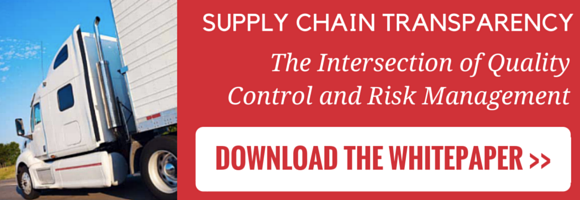
Do customers have a right to know the intricate details where their food comes from and how it is grown? Increasingly, they are affirming they do by voting with their dollar, supporting and financing transparent food supply chain reporting over opaque or obscured information availability. Additionally, food recalls and scandals have made working and moving through the food industry more perilous than ever as we approach the second quarter of 2016, which means that supply chain professionals have seen their job duties increase in weight and importance by degrees of magnitude. Risk management and meeting consumer expectations don't have to be mutually exclusive propositions for your business, as long as transparency is the goal of both.
Cost Versus Quality
Sourcing and procurement have traditionally been a numbers game: how cheaply can a product be obtained, how quickly and reliably could it be sent and so on. But cost isn’t the only factor driving consumer purchasing choices these days. When grocery shoppers evaluate two similar products, they may narrow down selection to a few similarly priced options. The ultimate deciding factor, then, is the reputation of a brand. While end-chain retail price points will likely always be a large factor in operational success, shorter supply chains that clarify source — and conditions of that source — are also seeing their stock rise in consumers' minds. This is especially apparent in meat product supply chains where the rigors of a food brand’s sourcing practices can be absolutely vital in preventing potential health and quality issues.
Weathering Market Flux With Niches
When new diet trends or fads threaten to disrupt the normal flow of products through traditional food retailing channels, supply chains must be flexible enough to side-brand or alternative-brand their core products. Food Tech Connect highlights that the farm-to-fork and locavore movements, for example, capitalize on these aforementioned short supply chains by emphasizing minimal food supply chain nodes. This, in turn, means minimal handling, processing and preservation of products throughout the supply chain journey. Transparency is an investment in future marketing capability. The more information and data available to sales and marketing teams, the more opportunities there are for emphasizing unique product traits as benefits. Risk management needs to incorporate market demand fluctuations as much as it needs to ensure product quality, and transparency in the chain allows it to do both.
A Preemptive Strike for Consumer Trust
Even if you have no problems with consumer trust and communication as it stands, it only takes a single competitor coming under fire to expose your brand to increased scrutiny. It's fairly standard practice for the media to compare and contrast practices of nearby competitors when discussing a food safety issue or concern. Unless each one of your supply chain partners is absolutely beyond reproach, you could be facing a very harsh spotlight.
Transparency is as much about in-house oversight as it is about consumer demands. Problems will become apparent to your procurement team well before they appear in the headlines if you make ongoing assessments and continuous improvement efforts a part of your operational schedules. Committing to transparency gives your company a chance to repair its own internal issues in the food supply chain and gives you a head start on consumer perception problems, allowing you to fix them before a chorus turns into a very public clamor.
Risk management is not an A-to-B pathway. It should branch out in nearly every direction and give some indication on how to deal with crises of every type. Transparency is a tool in the movement for honesty, integrity and durability in a food supply chain, and one you need to invest in for long term success.






